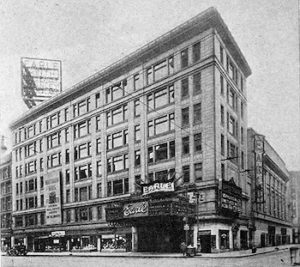
The Earle Theatre
*This date, in 1924, marks the opening of the Earle Theatre. This venue was a 2768-seat theatre in Philadelphia, PA.
It was located at 1046 Market Street, southeast of South 11th Street. In the 1930s and 1940s, it was a thriving venue for big-band jazz music. When it was constructed in 1923, it was the costliest theatre ever constructed in Philadelphia. The opulent grand theatre, built in the Italian Renaissance style, contained 2768 seats, 1164 of which were on the balcony. The stage measured 62 feet by 35 feet. George Matthews Harding painted extravagant murals and friezes, and marble was imported from Italy.
Major acts were featured, such as Jimmie Lunceford and His Orchestra: Live 1939 at the "Earle Theatre," Philadelphia. The theatre, the most expensive venue in Philadelphia then, was initially called the Elrae (Earle spelled backward), after Stanley Corporation stockholder George H. Earle. It was initially made for Vaudeville performances but was later adapted into a movie cinema. The theatre returned to Vaudeville for periods, including April 1931 and September 1940, with a four-week production of Boom Town. The theatre was a thriving venue for theatrical stage performances, films, and big band jazz music in the 1930s and 1940s, nurturing talents such as Duke Ellington, Benny Goodman, and Billy Eckstine.
The Count Basie Orchestra opened a one-week engagement at the Earle Theatre on Friday, January 23, 1942, breaking opening records. Basie also played at the Downbeat jazz club while in Philadelphia. Cab Calloway had an annual concert at the theatre. By 1953, the theatre's popularity had declined due to the growth of television, and the last stage show was given on February 26, 1953. The theatre was demolished later that year and replaced with a two-story department store.